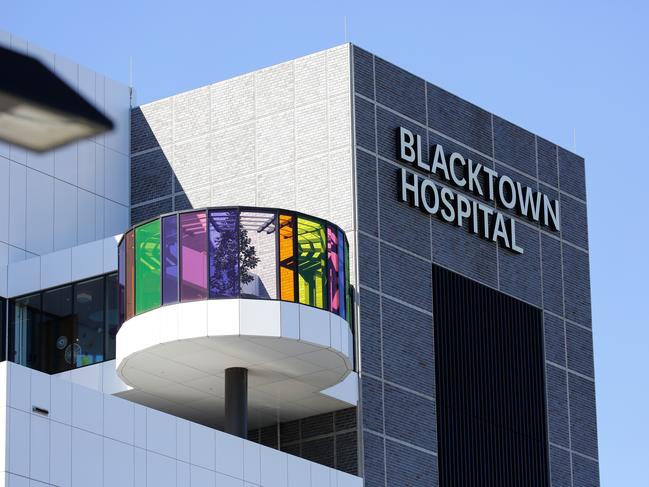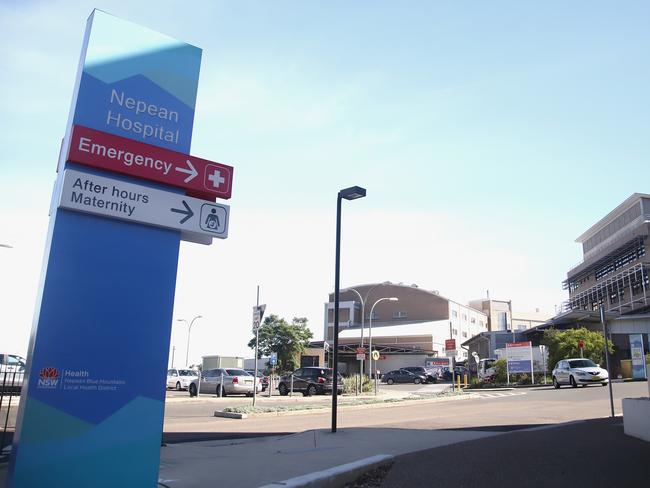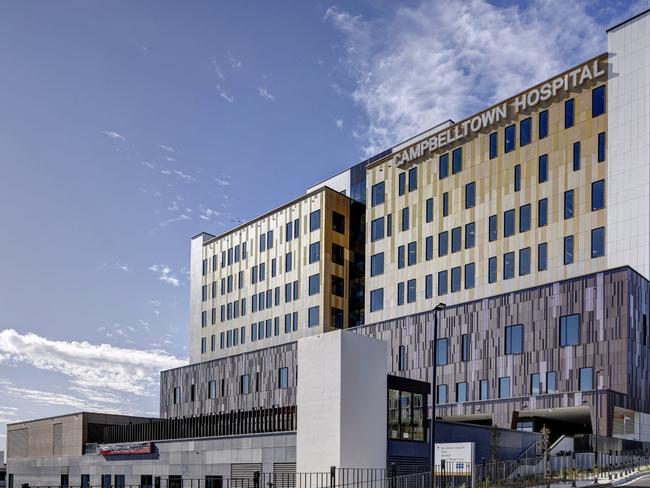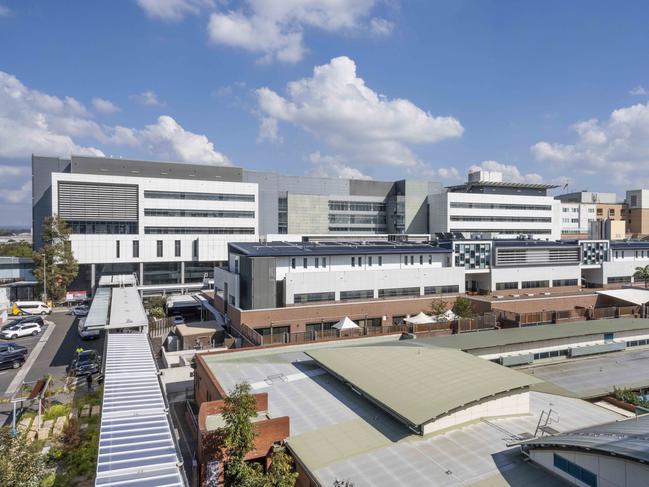Sydney’s hospital report card revealed: Where you’ll wait longest for treatment
The Daily Telegraph’s analysis of hospital funding and treatment times across Sydney’s public health network has revealed a stark east-west divide. Does your local district get an ‘F’ or an ‘A+’?
NSW
Don't miss out on the headlines from NSW. Followed categories will be added to My News.
Western Sydney residents are allocated a startling $1134 less per person for services in their local public hospital than their neighbours in the eastern suburbs, as clinicians reveal they are forcing patients out of hospitals early amid a massive shortage of beds.
NSW Health budget allocation figures for local health districts in this financial year reveal residents of communities across the Western Sydney Local Health District (LHD) are budgeted $2087 in per capita funding, with $2.426 billion allocated for 1.162 million people.
Meanwhile, residents in the Sydney LHD are budgeted $2.327 billion for 722,492, with a $3221 per capita funding allocation.
The Daily Telegraph can also reveal residents of the Southwest Sydney LHD have experienced a significant increase in funding per capita from $1750 in 2020 to $2520 last year, amid a ballooning population across the city’s southwest.
Meanwhile, analysis also shows a significant uplift in funding per capita across all Sydney metropolitan LHDs in the last five years.
Australian Medical Association vice president Fred Betros has worked as a general surgeon in Western Sydney for over 20 years, most recently working at Blacktown Hospital.
In that time he has seen the population explode, and despite “reasonable efforts” from governments to add resourcing he said it had not kept up with the population growth.
As a result, he said, major Western Sydney hospitals were experiencing worsening bed block and greater levels of comorbidity, which is when a patient has multiple medical disorders at the same time.
“You’re talking about areas with a much higher disease burden than the rest of the city,” he said.
“Currently we don’t have enough beds to do our elective operations because we’re too full with emergency department cases. This means we’re pushing for day stay in cases where a night stay would be preferable because there are no beds available.”
Dr Betros said the answer to a rising population with increasingly complex conditions was greater bed capacity, meaning more health staff and new hospitals close to where people live.
“Geographically we do need more hospitals,” he said.
“In metropolitan Sydney people should be within eight to 10 kilometres of their nearest hospital for things like emergency services.”
Health Minister Ryan Park said in the financial year to date, the government injected $375 million in additional health investment into Greater Western Sydney, “one of the largest health funding boosts in this state”.
“This is in addition to over $6 billion in health infrastructure investment in the pipeline for Greater Western Sydney over the coming years,” he said. “Over the past two years, our health workforce in Greater Western Sydney has grown by over 2,000.”
The minister said he knew “the challenges that our hospitals in Western Sydney face”.
“But we’re making progress and I’m encouraged by significant reductions in hospital ramping at Blacktown, Campbelltown and Liverpool hospitals,” he said.
“By any measure, we are building a health system that meets the growing needs of Greater Western Sydney now, and into the future.”

In the quarter from October to December 2024, Blacktown Hospital only had 41 per cent of patients start treatment on time, which decreased by 1.3 per cent from the same quarter in 2023.
At Nepean Hospital near Penrith, more than 60 per cent of patients started their treatment on time, which again decreased by 1.2 per cent from the 2023 quarter.

Meanwhile, in Campbelltown just 37.4 per cent of patients saw treatment on time.
Data from the same quarter also showed statewide 67,000 patients left emergency departments without or before completing treatment. This is 16,000 more than in 2019, with some requiring urgent or emergency care.
Multiple clinicians from hospitals across Western Sydney told The Daily Telegraph the significant population growth in the area meant more people were coming into emergency departments with less staff to care for them.
Bed block is a worsening issue in Western Sydney, where the number of patients in the wards prevents those in emergency from accessing a bed more quickly.
A senior Campbelltown Hospital clinician, speaking under the condition of anonymity due to NSW Health media rules, argued the department’s activity-based funding model was flawed as it disadvantaged hospitals in growth areas.

NSW Health gives hospitals funding based on the amount of activity on certain services, which often doesn’t take into account the need for new services, requiring newer hospitals to put up business cases.
“It was supposed to be a great leveller but on the whole it has been a great con,” the clinician said.
“If the RPA runs some service and people travel for that service then RPA gets the ongoing funding.
“That’s why Campbelltown still doesn’t have a 24/hr cathertization lab even though it is one of the busiest EDs in NSW – we’re still dependent on Liverpool for so many of the subspecialty services.
“Where we are in the southwest, we have the same problems that the rural hospitals face in attracting and retaining staff, but with all of the city volume.”

While Campbelltown hospital received a $766 million redevelopment, staff at the hospital say it still has many beds that physically exist but are unfunded and therefore can’t be used.
The emergency short stay is running only 16 of 25 beds that have been built due to a lack of funding. The hospital also currently has two MRI machines but only enough funding to physically run one. The other has never been used.
A Campbelltown Hospital nurse, speaking anonymously, said the hospital redevelopment “barely scratched the surface”, with the hospital still plagued with bedblock.
“We opened the new building but still with the population growth we’ve had there’s still not enough beds,” the nurse said.
“We’re all short staffed and there’s not enough beds to cover people and the population is exploding.”
Do you have a story for The Daily Telegraph? Message 0481 056 618 or email tips@dailytelegraph.com.au
This article is part of the Future Western Sydney series, which is proudly supported by Clubs NSW, Powerhouse, Transurban, Walker Corp, Western Sydney International Airport and Western Sydney University
More Coverage
Originally published as Sydney’s hospital report card revealed: Where you’ll wait longest for treatment





